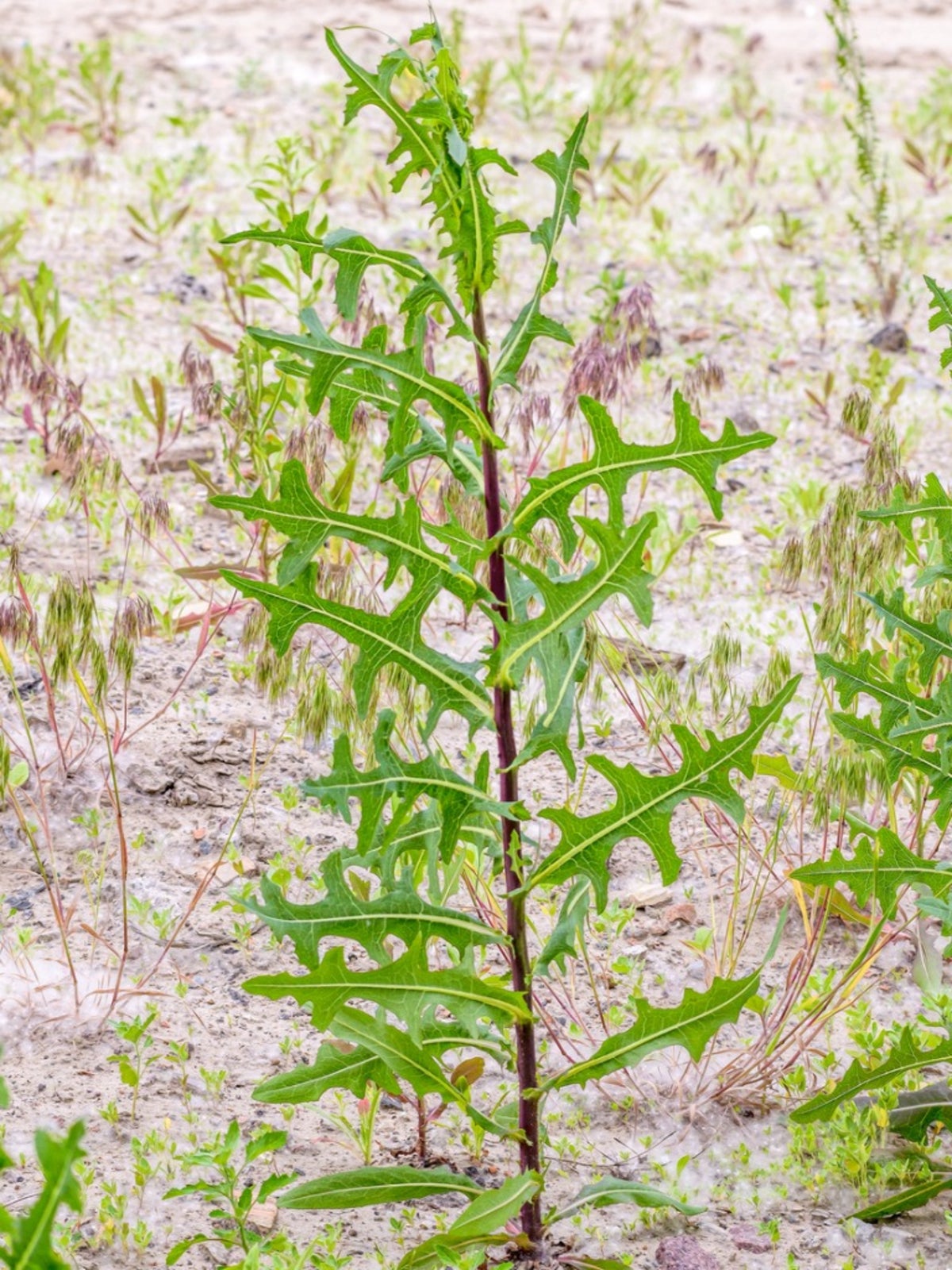So you’ve discovered prickly lettuce invading your precious garden and you’re desperately searching for a solution? Look no further! In this article, we will explore various effective methods to eliminate prickly lettuce from your garden and help you regain control over your green space. Whether you’re a seasoned gardener or a beginner, these tried-and-tested techniques will give you the upper hand in tackling this stubborn weed. From manual removal to organic herbicides, we’ve got you covered. Say goodbye to prickly lettuce and hello to a thriving garden!
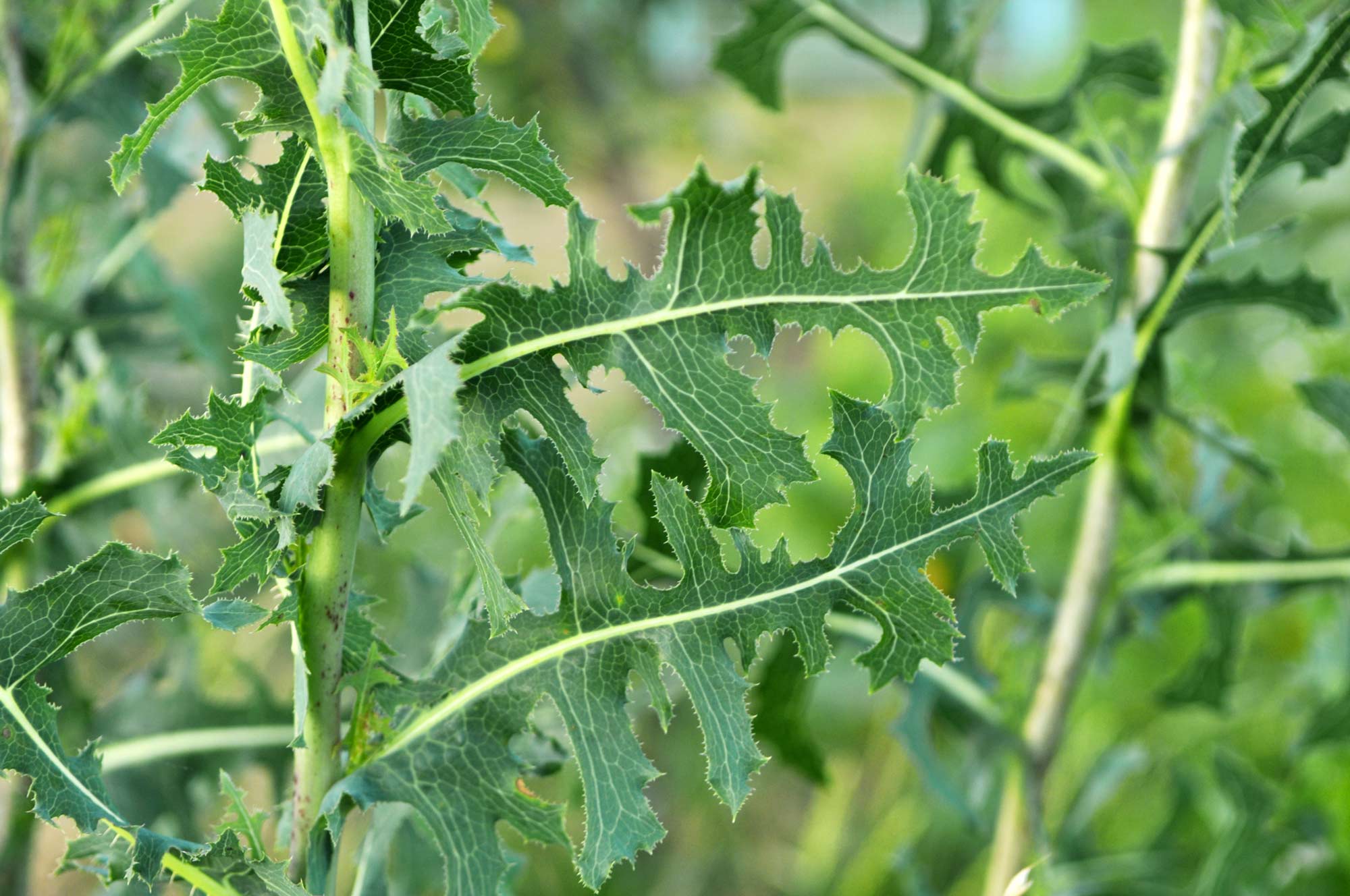
Understanding prickly lettuce
Prickly lettuce, also known as Lactuca serriola, is a common weed that can invade your garden and cause numerous problems. It’s essential to understand the characteristics of prickly lettuce to implement effective control measures. Prickly lettuce is aptly named due to its spiky leaves and stems, which can be quite sharp and prickly to the touch. The plant can grow up to six feet tall and has a deep taproot that makes it challenging to remove by hand.
Identification of prickly lettuce
Identifying prickly lettuce is crucial to distinguish it from other plants in your garden. The plant typically has deeply lobed leaves with pointed tips and irregularly toothed edges. The leaves are bluish-green in color and covered with tiny prickles. Prickly lettuce also produces small, yellow flowers that develop into fluffy white seed heads. These features make it distinct and easily recognizable, enabling you to take appropriate control measures.
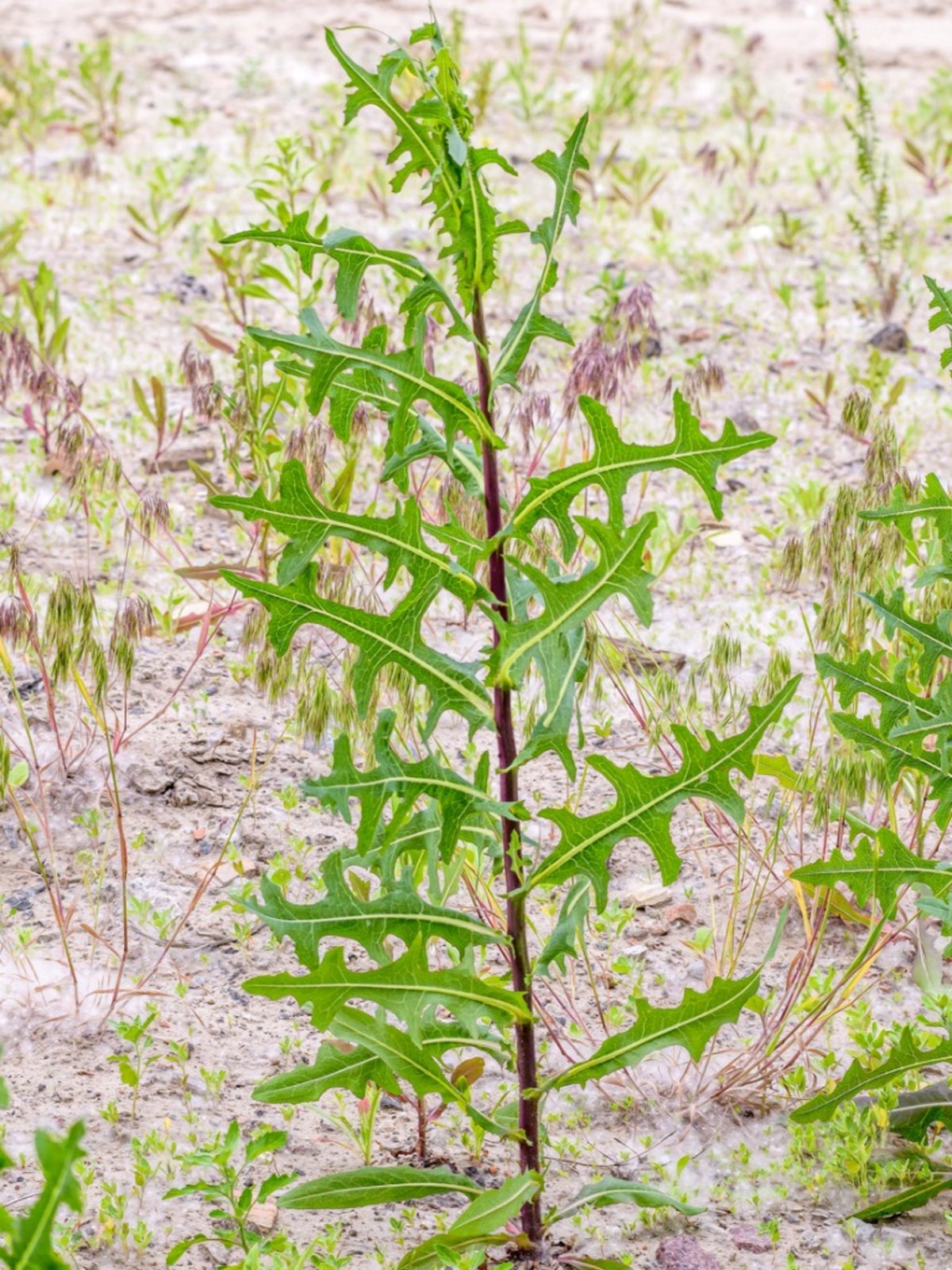
Lifecycle and growth habits
Understanding the lifecycle and growth habits of prickly lettuce is essential for effective elimination. Prickly lettuce is an annual weed, meaning it completes its life cycle within one year. It starts as a seed, germinates in early spring or fall, and then grows vigorously, especially in nutrient-rich soil. The plant produces flowers and seeds within a few weeks, allowing it to spread rapidly. By gaining insights into the growth habits and life cycle of prickly lettuce, you can target specific stages for control and prevent further infestations.
Preventive measures
Taking preventive measures is crucial to avoid the introduction and spread of prickly lettuce in your garden. By practicing these measures, you can minimize the need for extensive control methods and maintain a healthy garden environment.
Maintaining healthy soil
One of the most effective preventive measures is maintaining healthy soil conditions. Prickly lettuce thrives in nutrient-rich soil, so it’s crucial to ensure your garden soil is properly balanced. Conduct regular soil tests and amend the soil as needed. Avoid over-fertilization, as this can promote unwanted weed growth, including prickly lettuce. Additionally, ensure adequate drainage as wet soil can favor the growth of this weed.
Mulching
Applying a layer of organic mulch around your plants can act as a barrier against prickly lettuce. Mulch helps suppress weed growth by blocking sunlight and preventing weed seeds from germinating. Place a thick layer of mulch, such as wood chips or straw, around your plants, ensuring that the mulch does not touch the stems. This method will not only help control prickly lettuce but also assist in retaining soil moisture and moderating soil temperature.
Regularly monitoring the garden
Regular monitoring of your garden allows you to detect the presence of prickly lettuce and other weeds at an early stage. Take a stroll through your garden every few days, paying close attention to any new or unfamiliar plants. By promptly identifying prickly lettuce, you can take immediate action and prevent its spread before it becomes a larger problem.
Proper spacing of plants
Another preventive measure is to ensure adequate spacing between your plants. Proper spacing allows for good air circulation and reduces competition for nutrients, preventing the growth of prickly lettuce and other weeds. Follow the recommended spacing guidelines for each specific plant species to create an environment that is less conducive for weed growth.
Crop rotation
Implementing crop rotation techniques can be effective in reducing the occurrence of prickly lettuce. By regularly changing the location of your crops, you can disrupt the weed’s life cycle and impede its ability to establish itself. Plan your garden layout carefully, ensuring that plants from the same family or with similar growth habits aren’t placed in the same area for consecutive growing seasons.
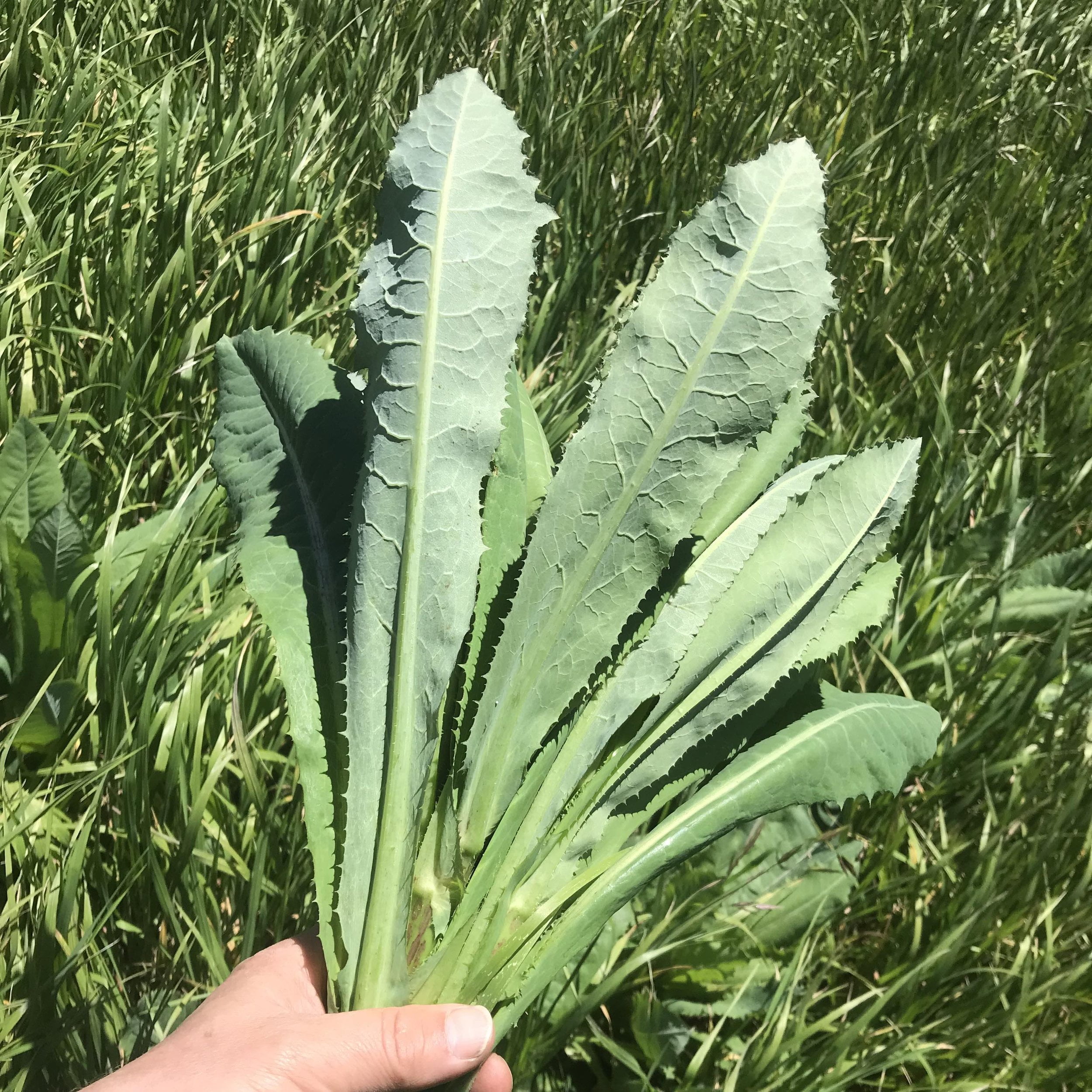
Mechanical control methods
Mechanical control methods involve physically removing prickly lettuce from your garden. While labor-intensive, these methods can be highly effective, especially for small infestations.
Hand-pulling
Hand-pulling is a manual method of removing prickly lettuce by hand. When the plants are young and have not yet produced seeds, carefully grasp the weed at the base, near the soil surface, and gently pull it out. Ensure you remove the entire plant, including the taproot, to prevent it from regrowing. Use gloves to protect your hands from the plant’s prickly texture. Although this method can be time-consuming, it’s ideal for small gardens or when dealing with a few isolated plants.
Cutting or mowing
For larger infestations or when dealing with mature prickly lettuce, cutting or mowing can be employed. Using handheld pruners or a lawnmower, trim the plants close to the ground, leaving just a few inches above the soil surface. Repeat this process several times throughout the growing season to weaken the weed and prevent it from flowering and setting seeds. Be cautious when handling the cut plant material, as it can still cause irritation due to its prickly nature.
Tilling
Tilling can be used to control prickly lettuce in areas where you plan to start from scratch. Use a rototiller or garden fork to loosen and turn over the soil, ensuring you reach a depth of at least six to eight inches. This method disrupts the weed’s root system, making it challenging for the plant to regrow. It is important to note that tilling can also bring buried weed seeds to the surface, potentially creating new weed problems. To mitigate this, follow tilling with other control measures like mulching or pre-emergent herbicides.
Chemical control options
Chemical control options can be an effective solution for managing larger infestations of prickly lettuce. However, it’s important to exercise caution when using herbicides and follow the product labels carefully.
Selective herbicides
Selective herbicides are designed to target specific types of plants while sparing desirable ones. Certain herbicides formulated to control broadleaf weeds, like prickly lettuce, can be useful. Before using any herbicide, identify the herbicide’s active ingredients and ensure that it is safe to use on the plants present in your garden. Follow the manufacturer’s instructions, including application rates, timing, and safety precautions, to achieve the best results without harming your garden.
Non-selective herbicides
Non-selective herbicides, such as glyphosate, can be effective in eliminating prickly lettuce, but they can also kill any plants they come into contact with. Exercise caution when using non-selective herbicides and apply them directly to the prickly lettuce leaves according to the product label instructions. Take care to avoid spray drift onto desirable plants, using protective measures like shields or spot spraying if necessary.
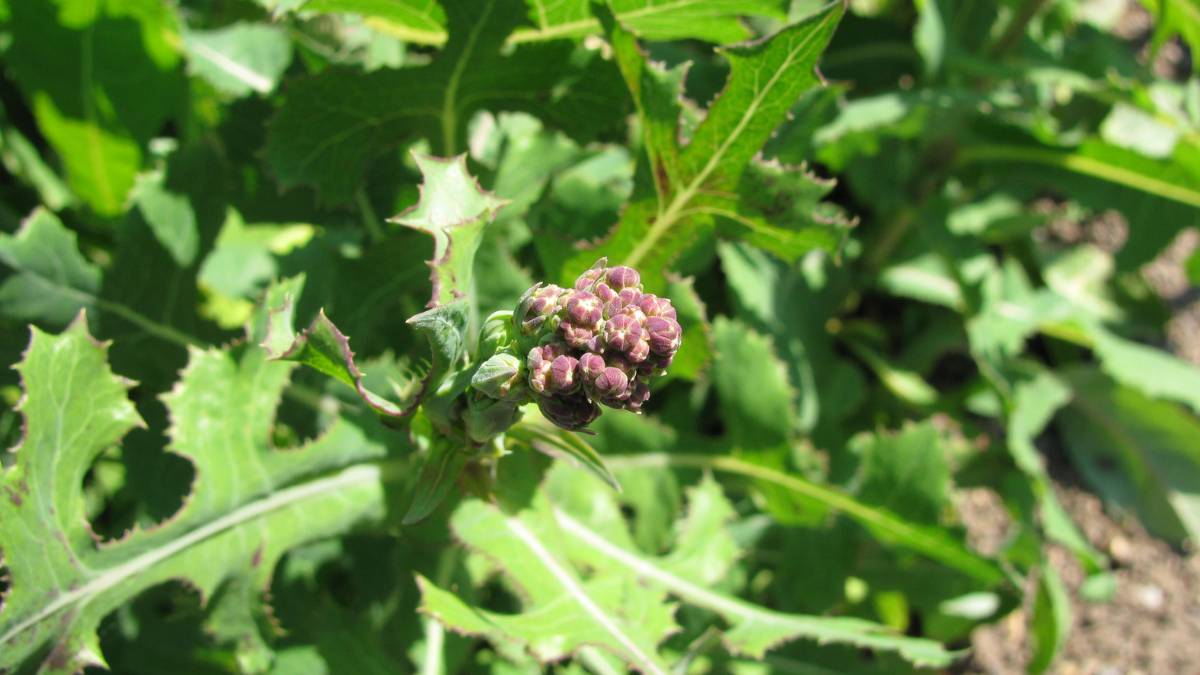
Biological control
Biological control methods involve utilizing natural enemies or living organisms to manage prickly lettuce populations. These methods are typically environmentally friendly and can provide long-term control.
Introducing natural enemies
Identify and introduce natural enemies of prickly lettuce, such as specific insects or plant pathogens, into your garden. These natural enemies can help regulate the weed population by feeding on the plants or damaging them. Consult with local experts or extension services to determine the feasibility and effectiveness of using biological control agents in your specific area.
Using livestock or poultry
Another biological control option is to use livestock or poultry to graze on the prickly lettuce. Animals like goats, geese, or chickens feed on the plant, helping to keep its growth in check. However, be cautious when introducing animals into your garden, as they can also damage desirable plants and require appropriate fencing or containment measures.
Cultural control techniques
Cultural control techniques involve implementing practices that modify your garden environment to deter the growth of prickly lettuce.
Deep cultivation
Deep cultivation involves loosening the soil to a considerable depth, usually eight to ten inches. This technique disrupts the weed’s root system and can effectively prevent the growth of prickly lettuce. Use a garden fork or a similar tool to loosen the soil, being mindful not to damage the roots of nearby desirable plants. Repeat deep cultivation periodically to control any new weed growth.
Solarization
Solarization is a method that employs the sun’s heat to control weeds, including prickly lettuce. Start by thoroughly watering the infested area, then cover it with clear plastic sheeting, securing the edges to trap the heat. Leave the plastic in place for several weeks during the hottest time of the year. The sun’s radiant heat will raise the soil temperature and kill weed seeds and seedlings, effectively reducing the weed population.
Companion planting
Companion planting involves strategically planting certain plants that can repel or inhibit the growth of prickly lettuce. For example, planting strong-smelling herbs like basil or marigold can deter this weed. Additionally, companion plants like lettuce varieties that are resistant to prickly lettuce can outcompete the weed and reduce its growth. Research suitable companion plants for your garden and integrate them into your planting scheme.
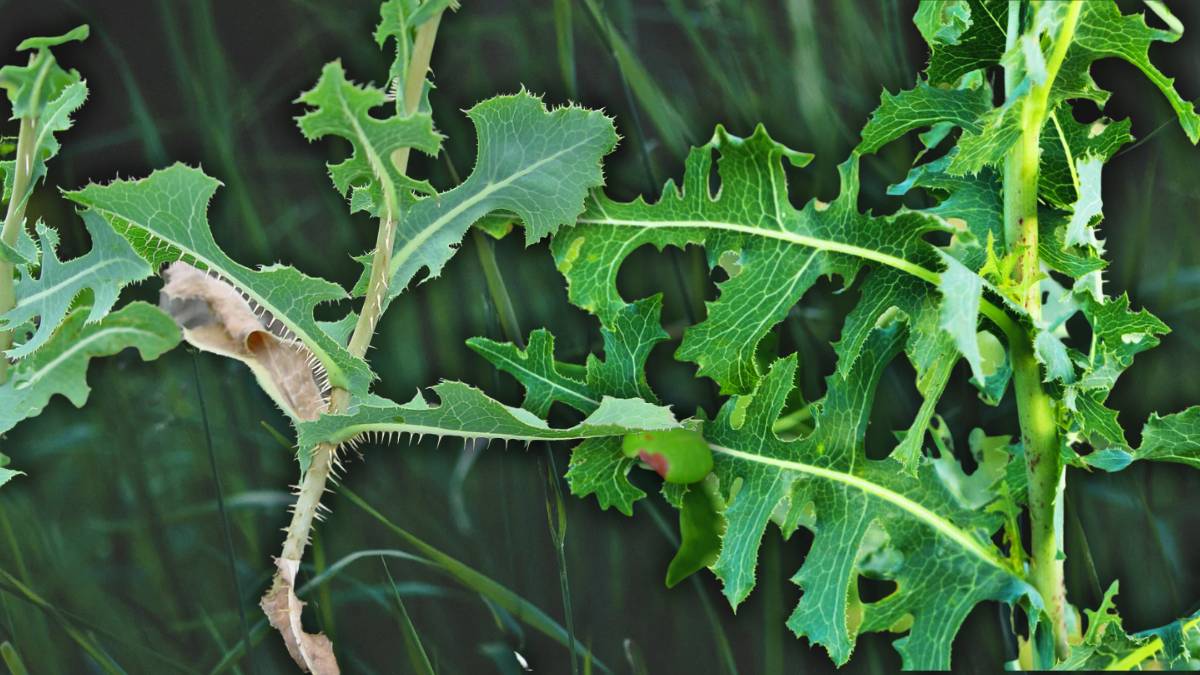
Homemade remedies
If you prefer natural or DIY solutions, there are several homemade remedies you can try to control prickly lettuce.
Vinegar spray
Vinegar, specifically white vinegar with an acetic acid concentration of 5%, can be an effective weed killer. Fill a spray bottle with undiluted white vinegar and spray it directly onto the leaves of the prickly lettuce. Take care to avoid spraying desirable plants, as vinegar can harm them as well. This method is most effective on small, young plants and may require multiple applications.
Boiling water
Boiling water is a simple yet effective method for controlling prickly lettuce. Carefully pour boiling water onto the weed, ensuring it reaches the base and the surrounding soil. This method works best on a sunny day when the weed is actively growing. However, be cautious when using boiling water and avoid pouring it near desirable plants, as it can also damage them.
Salt solution
Salt can be used as a natural herbicide for eliminating prickly lettuce. Create a salt solution by dissolving salt in water, making sure it is well dissolved. Transfer the solution to a spray bottle and apply it directly to the weed’s leaves, avoiding any contact with desirable plants. The high salt concentration can dehydrate and kill the weed. However, be cautious when using salt, as it can remain in the soil, potentially affecting future plantings.
Integrated pest management
Integrated pest management (IPM) is a comprehensive approach to control pests and weeds, including prickly lettuce. By combining multiple control methods in a strategic manner, you can effectively manage the weed population over time.
Combining multiple control methods
Implement a combination of mechanical, chemical, biological, and cultural control methods to actively combat prickly lettuce. For example, start by hand-pulling or cutting the weeds, then follow up with mulching or herbicide application. Incorporate cultural control techniques like deep cultivation or companion planting into your gardening practices. By addressing the problem from various angles, you can maximize control while minimizing reliance on any single method.
Regular monitoring and assessment
Maintain vigilance in monitoring your garden for new prickly lettuce infestations. Regularly inspect your plants and take note of any signs of the weed’s presence. This proactive approach allows you to address the issue promptly and prevent its further spread. Regular monitoring is especially important during peak growing seasons when rapid weed growth is most likely to occur.
Keeping garden records
Keeping detailed records of your gardening activities can provide valuable insights for future weed control efforts. Note the locations, severity, and specific control methods used for managing prickly lettuce. This information helps you track the effectiveness of different strategies and adjust your approaches accordingly. By maintaining records of your gardening practices, you can develop a more informed and proactive approach to weed management.
Disposal and prevention of spread
Once you have successfully removed prickly lettuce from your garden, proper disposal is crucial to prevent the weed from reestablishing itself or spreading to other areas.
Properly disposing of removed plants
Collect the removed prickly lettuce plants, including the roots, and place them in a sturdy garbage bag. Seal the bag tightly to prevent any seeds or plant fragments from escaping. If the plants have matured and produced seeds, consider double-bagging them to ensure containment. Dispose of the bag in municipal waste bins or by contacting your local waste management facility for guidance on proper disposal methods.
Preventing seed dispersal
Preventing the spread of prickly lettuce seeds is vital to maintaining a weed-free garden. Ensure you remove the seed heads from any plants before disposing of them. Be cautious when working near mature prickly lettuce, as the slightest disturbance can cause the seeds to scatter. Take care to prevent the seeds from falling into your soil or nearby areas, as they can remain viable for years and give rise to new infestations.
Seeking professional help
If you find yourself overwhelmed by the task of controlling prickly lettuce in your garden, don’t hesitate to seek help from professionals who specialize in horticulture and garden maintenance.
Consulting with a horticulturist
A horticulturist can provide expert advice and guidance tailored to your specific garden and weed control needs. They can assess the severity of the prickly lettuce infestation, recommend appropriate control methods, and help you develop a long-term weed management plan. Consulting with a horticulturist can save you time, effort, and frustration by providing you with effective solutions customized to your garden.
Hiring a garden maintenance service
If you feel overwhelmed by the sheer scope of the prickly lettuce problem or simply don’t have the time to handle it on your own, consider hiring a garden maintenance service. These professionals have the expertise, tools, and resources to effectively manage prickly lettuce and other weeds in your garden. They can implement the most suitable control methods, prevent future infestations, and maintain your garden’s overall health and aesthetics.
In conclusion, eliminating prickly lettuce from your garden requires a multi-faceted approach that combines preventive measures, mechanical control methods, chemical control options, biological control, cultural control techniques, homemade remedies, integrated pest management, and proper disposal practices. By understanding the characteristics and life cycle of prickly lettuce, identifying the most suitable control methods, and seeking professional help when necessary, you can reclaim and maintain a healthy and weed-free garden. Remember to stay proactive, keep records, and regularly monitor your garden to ensure long-term success in eliminating prickly lettuce.
